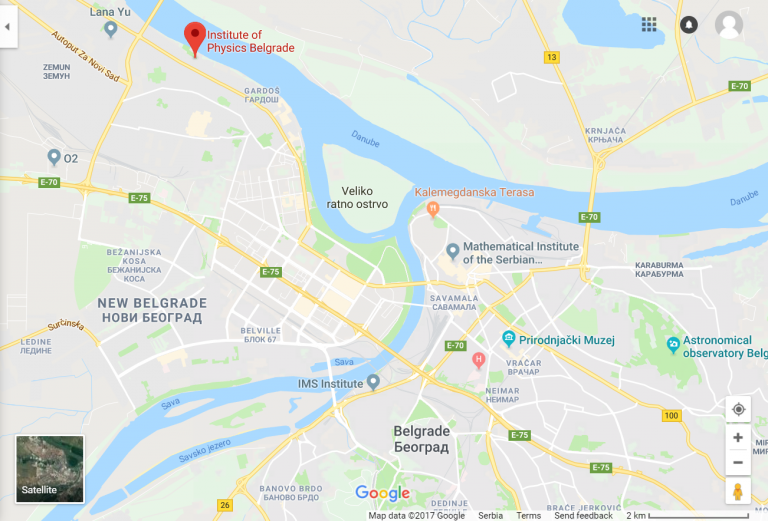Home » Ivan
Category Archives: Ivan
New publication by Ivke, Bilja and Ivan
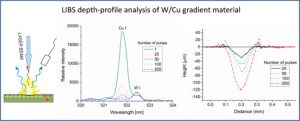 During the work on the realization of NOVA2LIBS4fusion project financed by the Science Fund of the Republic of Serbia Ivke, Bilja and Ivan published an article in Spectrochimica Acta B: Atomic Spectroscopy journal entitled LIBS depth-profile analysis of W/Cu functionally graded material
During the work on the realization of NOVA2LIBS4fusion project financed by the Science Fund of the Republic of Serbia Ivke, Bilja and Ivan published an article in Spectrochimica Acta B: Atomic Spectroscopy journal entitled LIBS depth-profile analysis of W/Cu functionally graded material
Ivan became Research Assistant
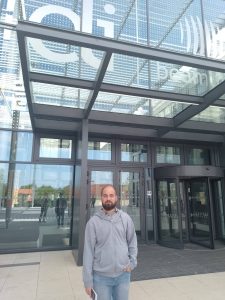 We proudly announce that since 7th November 2022., Ivan has a new scientific title of Research Assistant at the Insitute of Physics Belgrade. We wish him a lot of success in his research in the years to come.
We proudly announce that since 7th November 2022., Ivan has a new scientific title of Research Assistant at the Insitute of Physics Belgrade. We wish him a lot of success in his research in the years to come.
Ivan took part in this year ITER International School held in Aix – en – Provence
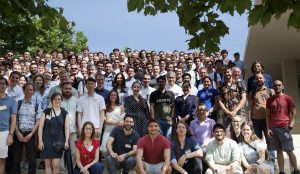 It is our great pleasure to report that Ivan was accepted to participate in this year ITER International School 2023. The topic of the summer school was Energetic Particles in Fusion Plasmas, where the school gathered leading experts in this filed that gave lectures to the students. Part of the summer school was also dedicated to the visit of ITER site, where students had the opportunity to see the site and to hear recent advances in the construction of the largest tokamak so far.
It is our great pleasure to report that Ivan was accepted to participate in this year ITER International School 2023. The topic of the summer school was Energetic Particles in Fusion Plasmas, where the school gathered leading experts in this filed that gave lectures to the students. Part of the summer school was also dedicated to the visit of ITER site, where students had the opportunity to see the site and to hear recent advances in the construction of the largest tokamak so far.
Ivan presented part of his PhD thesis work on 14th SCSLSA
14th SCSLSA was held in Bajna Bašta from 19th to 23rd June. Ivan was invited to give a progress report on his wok on application of Machine Learning algorithms on the determination of Stark Broadening line widths. The talk was entitled Stark Broadening Modeling with ML and AI Algorithms and abstract is given below. 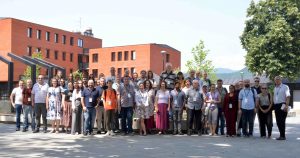
During past 20 years many Stark broadening models were developed that can calculate spectral lineshape and estimate a line width that is extensively used in plasma diagnostics of both astrophysical and laboratory plasmas. Some of these calculations yield results relatively fast, some of them need a lot of computational time. Therefore, idea of creating a machine learning (ML) model emerged as a tool for fast estimation of Stark width without need of huge computational time. In our approach, out of three tested models, random forest (RF) algorithm showed the best predictive power after it has been trained, where the coefficient of determination R2 = 0.94 was obtained. Model was trained on a database created by merging parameters from Stark B and NIST atomic databases, it had 14 input parameters that were used to predict final Stark width. Results were compared with experimental ones as well as with SCP theory. We also checked for regularities in Stark effect, and they were also confirmed and in agreement with previous findings.
Ivan took part in scientific excursion organised by Faculty of Physics
From 29th May until 3rd June Ivan took part in scientific excursion jointly organised by Faculty of Physics of University of Belgrade and Physical Society of Serbia. Firstly they visited Electrotechnical Faculty of University of Brno, where they saw Laboratory for High Voltages and High Currents.

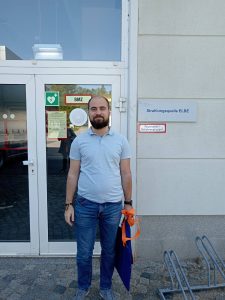 Next they visited Institute of Plasma Physics of Czech Academy of Sciences and Arts where they had a lecture given by prof. Jan Horacek from IPP about fusion and tokamak physics in general. This was followed by the tour through PALS laboratory, where they saw a PW iodine laser system.
Next they visited Institute of Plasma Physics of Czech Academy of Sciences and Arts where they had a lecture given by prof. Jan Horacek from IPP about fusion and tokamak physics in general. This was followed by the tour through PALS laboratory, where they saw a PW iodine laser system.
The next day they went to Dresden, to visit Helmholtz Zentrum Dresden – Rossendorf scientific institute, where they had opportunity to see free – electron laser system located at ELBE facility, as well as PW laser system DRACO that was recently put in operation.
At the end, they were guests in ELI beams facility, where they saw the most powerful laser systems in the world and had pleasure of hearing interesting lectures from experts employed there.
Ivan’s new publication
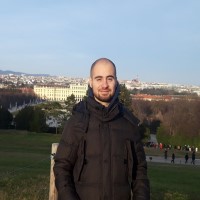 We are pleased to announce that Ivan, together with Ivke has published the article entitled Determination of austenitic steel alloys composition using laser-induced breakdown spectroscopy (LIBS) and machine learning algorithms in European Physical Journal D (EPJ D).
We are pleased to announce that Ivan, together with Ivke has published the article entitled Determination of austenitic steel alloys composition using laser-induced breakdown spectroscopy (LIBS) and machine learning algorithms in European Physical Journal D (EPJ D).
Ivan participated at SLSP6
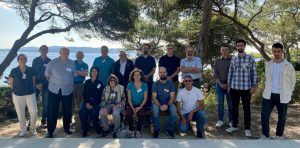 Ivan took participation at 6th Spectral Line Shapes in Plasma Workshop (SLSP6) where he held 15 minute lecture entitled Stark Broadening Modeling with ML Algorithms, in which he presented his recent work on application of machine learning algorithms for modeling of Stark spectral line broadening.
Ivan took participation at 6th Spectral Line Shapes in Plasma Workshop (SLSP6) where he held 15 minute lecture entitled Stark Broadening Modeling with ML Algorithms, in which he presented his recent work on application of machine learning algorithms for modeling of Stark spectral line broadening.
SPIG 2022
Ivke, Biljana, Neša, Milica and Ivan participated in 31th Symposium of Physics of Ionized Gases (SPIG 2022), held in Belgrade at the Serbian Academy of Sciences and Art. The conference was organized in hybrid format, part of the lectures was online and the other part was on site. Ivke was member of the Scientific Committee for the fifth consecutive time. Neša was in the Ogranizing Committee.
At the poster presentation part of the conference, Biljana presented the poster entitled “Spectroscopic characterization of laser-induced plasma on doped tungsten“, while Ivan presented the poster entitled “Elemental analysis of austenitic steel by calibration-free laser-induced breakdown spectroscopy (CF-LIBS)“. Apart from this, we also presented, or participated in the following posters:
Self-mixing interferometry for plasma diagnostics – Nikola Goleš, Neda Babucić, Nenad M. Sakan and Milivoje Ivković
Application of artificial neural network in the analysis of the spectra from laser ablation combined with fast pulse discharge – Nenad M. Sakan, Milica L. Vinić, Vladimir A. Srećković, Ivan Traparić, and Milivoje R. Ivković
Modeling of Stark spectral line broadening by machine learning algorithms – Irinel Tapalaga, Ivan Traparić, Nora Trklja Boca, Jagoš Purić and Ivan P. Dojčinović
Ivan’s very first publication
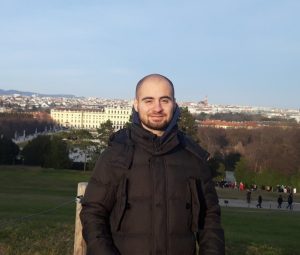 We are happy to inform you that Ivan has published his very first article in collaboration with researchers from Faculty of Physics: Irinel Tapalaga, Nora Trklja Boca and Ivan Dojčinović. Paper is entitled Stark spectral line broadening modeling by machine learning algorithms (https://doi.org/10.1007/s00521-021-06763-4) and it was published in Neural Computing and Applications.
We are happy to inform you that Ivan has published his very first article in collaboration with researchers from Faculty of Physics: Irinel Tapalaga, Nora Trklja Boca and Ivan Dojčinović. Paper is entitled Stark spectral line broadening modeling by machine learning algorithms (https://doi.org/10.1007/s00521-021-06763-4) and it was published in Neural Computing and Applications.
Ivan became Junior Researcher

We proudly announce that Ivan has been selected in his first scientific title Junior Researcher on 24th February 2021. We congratulate him and also wish many successful years in the future research.
